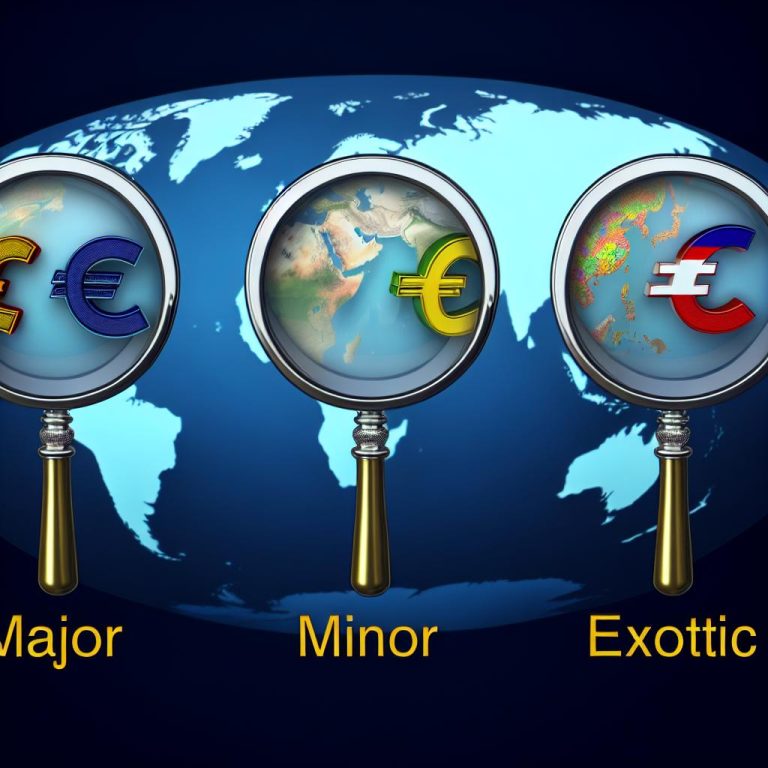Understanding Major, Minor, and Exotic Currency Pairs
In the ever-evolving and dynamic realm of forex trading, the classification of currency pairs into distinct categories is imperative for traders aiming to navigate the market effectively. The categorization of currency pairs into three primary types: major, minor, and exotic, aids in offering clarity and guiding specialized trading strategies. This organization forms the cornerstone of understanding how the forex market functions and is pivotal in assisting traders make well-informed decisions.
Major Currency Pairs
Major currency pairs represent the most widely traded and liquid pairs in the forex market. They typically comprise the United States Dollar (USD) paired alongside other major world economies. These pairs include currencies that are central to global trade and finance, ensuring that they play a significant role in the forex landscape. Here, we explore the intrinsic characteristics that define major currency pairs, offering insight into why they are popular among traders.
Lower Volatility and Stability: Major pairs are renowned for their relative stability, often displaying lower volatility compared to minor or exotic pairs. This lower volatility offers traders potentially more stable trading opportunities, making these pairs more predictable in terms of price movement. Many traders appreciate the consistency it provides as part of their risk management strategies.
High Liquidity and Tighter Spreads: A prominent feature of major currency pairs is their high liquidity. The abundance of market participants trading in these pairs means that they usually benefit from tighter spreads. For traders, tighter spreads translate into reduced transaction costs, making the execution of trades more cost-effective and appealing, especially in large volumes.
The primary major currency pairs include:
- EUR/USD
- USD/JPY
- GBP/USD
- USD/CHF
- AUD/USD
- USD/CAD
- NZD/USD
These pairs predominantly feature currencies from economically robust countries, and the presence of USD signifies its status as a global reserve currency, further cementing its central role in international trade.
Minor Currency Pairs
Minor currency pairs, often known as cross-currency pairs, deviate from major pairs as they do not involve the US dollar. This subgroup of currency pairs, while traded less frequently than majors, offers unique characteristics and opportunities for traders willing to explore beyond the major currencies.
Absence of the US Dollar: The defining characteristic of minor pairs is the exclusion of the USD. This results in pairs such as EUR/GBP and EUR/JPY being prominent examples. Despite the absence of the USD, minor pairs still encompass the remaining major global currencies, made up of pairings like the Euro (EUR), British Pound (GBP), and Japanese Yen (JPY) with each other.
Wider Spreads and Diverse Influences: Due to lower trading volumes, minor currencies can exhibit slightly wider spreads than their major counterparts. Moreover, minor pairs are particularly sensitive to regional economic changes and geopolitical events unique to their respective countries. This attribute creates specialized opportunities and challenges for traders seeking diversification and exposure to different economic environments.
Exotic Currency Pairs
Exotic currency pairs incorporate a major currency paired with the currency of an emerging or smaller economy. Trading in exotic pairs isn’t as prevalent as trading major or minor pairs, yet it offers an avenue for those with an appetite for higher risk and potential returns. Exploring the characteristics of these unique pairs provides a window into their intriguing and potentially rewarding world.
Lower Liquidity and Higher Spreads: Exotic pairs possess lower liquidity, often resulting in higher spreads. These wider spreads reflect increased transaction costs, and combined with the larger price swings, they contribute to the inherent volatility in trading exotic currency pairs.
For traders willing to embrace the additional risk, the potential for high returns is an enticing prospect. Furthermore, the distinctive influences impacting exotic pairs include regional economic conditions, political stability, and localized factors such as natural disasters or policy shifts. These specific influences create a landscape fraught with both risks and possibilities.
Examples of exotic currency pairs:
- USD/TRY (US Dollar/Turkish Lira)
- USD/ZAR (US Dollar/South African Rand)
- EUR/SEK (Euro/Swedish Krona)
Key Considerations for Traders
Navigating the forex market requires keen attention and deliberate choices regarding the type of currency pairs to trade. Different traders have varied approaches based on their trading style, risk tolerance, and financial goals. For a balanced and thoughtful approach, several key considerations should inform the decision-making process when selecting specific currency pairs.
Tailoring to Trading Style: Traders must align their choice of currency pairs with their preferred trading method. While major pairs might cater to those pursuing lower-risk opportunities, minor and exotic pairs offer chances for diversification and potentially higher returns. It’s crucial to factor in one’s understanding of the market and readiness to embrace the associated risks.
Understanding Market Dynamics: Each currency pair classification comes with its own level of market liquidity and risk profile. Recognizing these dynamics is essential in crafting effective trading strategies that align with personal objectives. By anticipating market behavior linked to different pairs, traders can optimize their strategies accordingly.
Leveraging Resources for Informed Decisions: To stay well-informed, traders are encouraged to access an array of online resources specializing in forex trading strategies. Numerous financial market education platforms and brokers provide comprehensive guides and educational content. Leveraging these resources can illuminate complex market mechanics and refine analytic skills.
Understanding the classification of currency pairs empowers traders, offering them the knowledge necessary to make strategic and informed trading decisions. By grasping the nuances of major, minor, and exotic pairs, traders are better positioned for success in the dynamic forex market.
This article was last updated on: March 15, 2025

